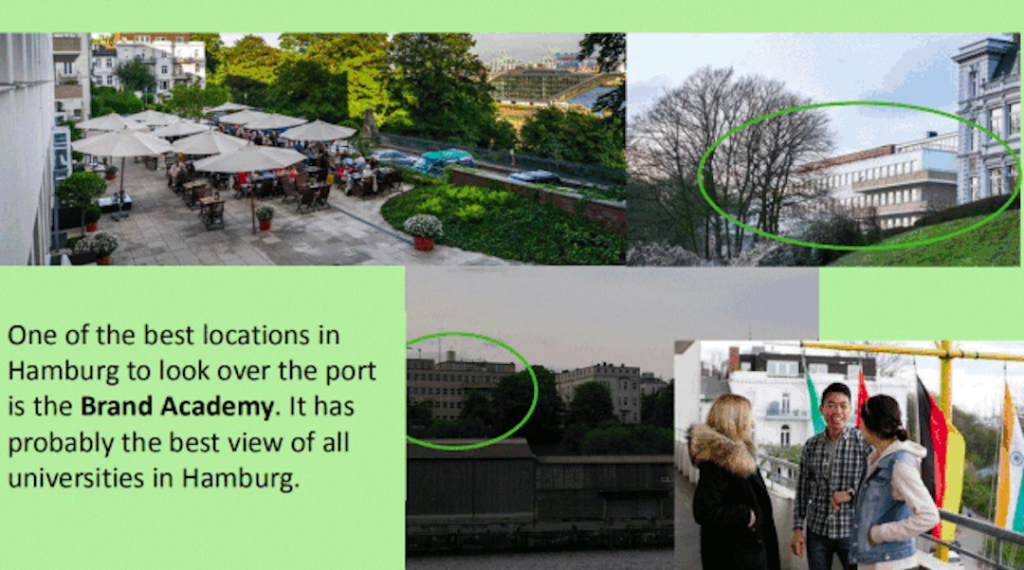Bert Machael Peter, with a double master's degree in sociology and international economics, was a senior marketing insight and planning manager at British American Tobacco. He is currently a senior lecturer and tutor at the University of Applied Sciences Hamburg Design and Communication, the HAW University of Applied Sciences Hamburg and the EBC University Hamburg.
In the afternoon of May 27, Mr. Michael gave the students a brief introduction to the city of Hamburg, Germany, to help them understand this city in the heart of Western Europe and the place where they will start a new phase of study next year, so let's take a look!
About Hamburg
Hamburg is one of the most important port cities in Europe and one of the few ports in the world that is close to the city (the location of the institution partnered with is probably the best view of any university in Hamburg). Hamburg is also famous for its concerts, and of course there will be great bars and clubs, and quite a lot of outdoor activities!
You don't have to worry about food or accommodation when living in Hamburg, as many stores offer Chinese and Asian food and there are many Chinese restaurants, or you can choose to cook your own food. People usually live in student residences or shared apartments, or even their own apartment!



Brainstorming
Standardized marketing or adaptive marketing?
When developing a global brand strategy, decisions must be made about standardized or adapted marketing. At one extreme is the standardized approach, which applies a standard marketing mix including products, services, global distribution and communication; at the other extreme is the common adapted or localized marketing mix, e.g. a combination of marketing tailored to each market for different target groups bit.
Take Disney for example, in 1992 Paris Disney surprisingly lost 2.4 billion, because the operating company ignored cultural differences, resulting in a direct conflict between the rules and habits of the United States and the habits of Europeans, which is an example of standardized marketing.
Dunhill is an example of adaptive marketing, where after its creation over time many Dunjoys were introduced to the end market with increasingly fragmented brand identities due to differences in packaging type, design, price positioning, and product specifications.


Student Feedback
On the professional side, the professor used Disney in Paris as an example to show the advantages and disadvantages of standardized marketing and localized marketing, while using Dunhill as a positive example to explain in detail that the road to its success was due to its in-depth understanding of the preferences and habits of local residents, while acquiring some small companies to achieve the goal of expanding its influence and sales volume. In addition, the professor mentioned that as a manager of an international company, we need to consider far more than one or two things can be summed up, personal, organizational, customer feedback, company products ...... a slight change in each of them may affect the final brand effect, and the brand manager's job is to coordinate each of them to achieve the final success. --Ziqing Wang, Exhibition 182
Unlike many professors who have come before him, he showed us many things we didn't know or didn't expect from his life and understanding of the city, which was fascinating. principle - product, price, and promotion. I was impressed by the organization's strategy stick, and Peter pointed out that the responsibility for profits in the end market lies with the end market. The responsibility for shareholders' profit lies with the center. The annual plan is proposed by the end market and negotiated by the center. Profitable non-strategic brands are used as the basis for strategic investments. Investments in strategic brands are used as the basis for strategic investments. --Exhibition 182 Feng Chentao
